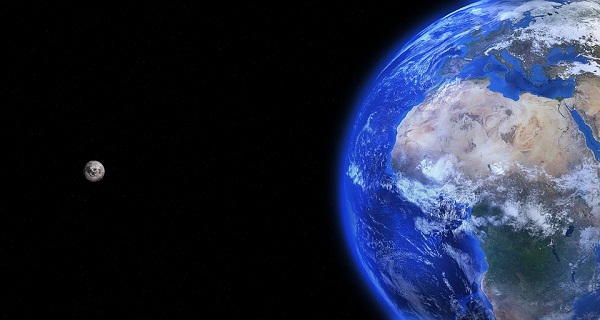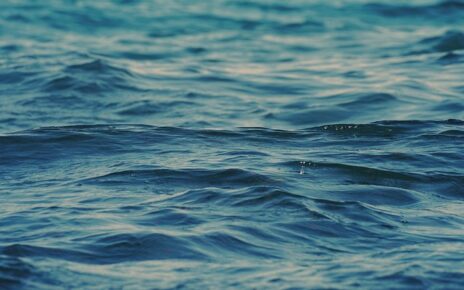In May 2017, Fisher Space Pen Company unveiled its new product—a Raw Brass Cap-O-Matic space pen—the Company’s fourth product launch of 2017. Although M4 Cap-O-Matic Pen was already available in the market, it was the first time that the space pen was made available in the RAW state.
The M4 Raw Brass Cap-O-Matic Pen was launched with a price tag of $17.00.
The other three launches in 2017 were: (1) Eclipse Space Pen ($9.00), (2) the Black Titanium Nitride – Original Astronaut Space Pen (#AG7-BTN/ $100) and (3) Clutch Space Pen ($49).
History of Space Pen
Fisher Space Pen has a very interesting story associated with it. For decades, NASA has been accused of having financed the development of the “Space Pen,” an anti-gravity ballpoint pen that was created for the purpose of writing in space. For some people, it was an expensive investment because a pencil would have served that purpose very well. It was also said that Russians did not invest much money on space pens and used pencils in space for writing purpose.
However, this story (accusation) about NASA’s investment in space pen research is completely false.
During 1960s, when the space race between the US and Russia was at its peak, NASA realized that the ballpoint pens don’t work in space because of zero gravity. The pressure in space is not the same as on Earth, which results in temperature differences. NASA also considered use of pencils in space as potentially dangerous, because of the risk of short circuits, due to broken points or graphite dust.
These problems led NASA to sign a contract with Tycam Engineering Manufacturing. Under this contract, NASA was to purchase some 30 mechanical pens from Tycam. However, NASA cancelled the order later due to astronomical costs of such pens (approximately $130 each). After this deal was cancelled, NASA was hesitating to adopt a zero gravity pen, but the Apollo 1 simulation disaster, where three astronauts died in a fire, forced NASA to continue its search for space pens.
This was the time when American Paul C. Fisher, manager of Fisher Pen Company, was working on a Zero Gravity Pen design. Fisher Pen Company was known for specializing in the manufacturing of pens.
According to Cary Fisher, Paul’s son, NASA had contacted some pen companies to design a writing instrument that would function flawlessly in space, but none of them could create such device for NASA. Fisher approached NASA and told them about his pen design. Fisher had already spent nearly $1 million and finally created a space pen in 1965. This pen, equipped with a pressurized ink cartridge, could operate in weightlessness, underwater, and withstood varying temperatures ranging from -45°C to 2,204°C. It was able to write in space, upside down, on almost any surface. The AG-7, the first “anti-gravity” pen had a retractable lead, and was launched in 1965. It was quickly followed by the shorter “Bullet Pen,” a copy of which is kept in the Museum of Modern Art, New York.
Fisher sent samples of his AG7 space pen to Dr. Robert Gilruth, then director of the Manned Spacecraft Center (later NASA Johnson Space Center) in Houston. The pen was subjected to rigorous testing. In 1968, after a series of tests that revealed the superiority of the space pen, NASA decided to purchase 400 units (at $6 each) to equip the Apollo program. The secret of these space pens working in zero gravity was in the composition of the ink and in the refill that was pressurized with nitrogen. The flow of the ink in these pens did not need gravity to operate. The retractable, pressurized pen functioned flawlessly in space aboard the first manned Apollo mission in 1968. During the 11-day space journey of Apollo 7, astronaut Cunningham and fellow astronauts Donn F. Eisele and Walter M. Schirra Jr. used AG7 space pens when they needed to write notes about the performance of the spacecraft systems, testing ignitions of the service module propulsion engine, etc.
Fisher space pen found takers in the USSR as well. The Russians, before succumbing to the space pens, used greasy pastels with which they wrote on plasticized sheets so that their notes were fixed more durably on the support. Later, Russians bought 100 space pens from Fisher Company for use in their space program. Russian cosmonauts used space pens for writing notes on the Russian-run Mir Space Station.
From the 1960s to the present day, zero-gravity pens continue to be used in space missions.
During 1970s, Paul Fisher continued to design some unique, quality products. According to the Fisher Space Pen Company, all their pens are handcrafted and can write 3 times longer than other pens.
“People find that our technology is by far the most reliable from both a shelf-life and environmental standpoint.” says Cary Fisher, now co-owner and Paul’s son.
How Does A Space Pen Work?
The cartridge of a space pen is a hermetically sealed tube with pressurized nitrogen gas, thixotropic ink, and a tungsten carbide ballpoint tip. When Fisher was working on space pen, he observed that the pressurized cartridge leaked uncontrollably while successfully pushing the ink out the tip of the pen. Fisher worked on the ink and created a new, thick thixotropic ink that was a gel at rest but changed into a liquid under pressure. This thick ink didn’t let the pen to leak, and the pen would write only when pressure was applied to the ballpoint.
A Brief History of Fisher Space Pen Company
Fisher Pen Company was founded in 1948 by Paul C. Fisher—an innovator and a pen manufacturer. Fisher had worked with ball bearings in an airplane propeller factory, which helped him to become an expert of the ballpoint pens. The first major invention of the Fisher’s company was the “Universal Refill Cartridge” that was created in 1953 and could easily fit in most brand name pens. In 1966, Fisher developed the Sealed and Pressurized Fisher Space Pen Ink Cartridge for the original AG7 Anti-Gravity Pen. Fisher Pen Company shifted its manufacturing facility from Van Nuys, California to Boulder City, Nevada in 1976. The year 1980 brought some good surprises as Paul Fisher was selected as “Small Business Person of the Year” for the State of Nevada. In 1981, NASA used the Fisher CH4 – Chrome Plated Shuttle Space Pen in Space Shuttle Columbia (STS-1). Two years later, in 1983, US President Ronald Reagan used a Fisher Space Pen to sign the Proclamation inaugurating the Air and Space Bicentennial Year. The Fisher Pen Company came up with the Stowaway “Atocha” Pen Line in 1985. These pens were filled with genuine gold and silver and were designed to commemorate the discovery of the Atocha by the American treasure hunter, Mel Fisher. In 1995, Fisher Space Pen Company was presented the Nevada Governor’s “Exporter of the Year” award. In 1998, the Fisher Space Pen became the world’s first product sold from space. In 2006, Paul Fisher—the inventor of the space pen—died at the age of 93. In 2016, Fisher Space Pen Company celebrated the 50th anniversary of the birth of its first space pen. The year 2018 will mark the 50th anniversary of astronauts using the pen for the first time in outer space.
An Icon of American Ingenuity
In addition to its application in space, Fisher Space Pen is a product that has widespread appeal on Earth as well. Paul Fisher’s iconic Bullet Pen is displayed in The Museum of Modern Art. This pen had sleek rounded ends and became famous as a symbol of American industrial design. It is a highly popular gift item and is available for customers in 16 colors and finishes. Consumers love the pens created by the Fisher Space Pen Company, and these pens are sold across a spectrum of industries.

